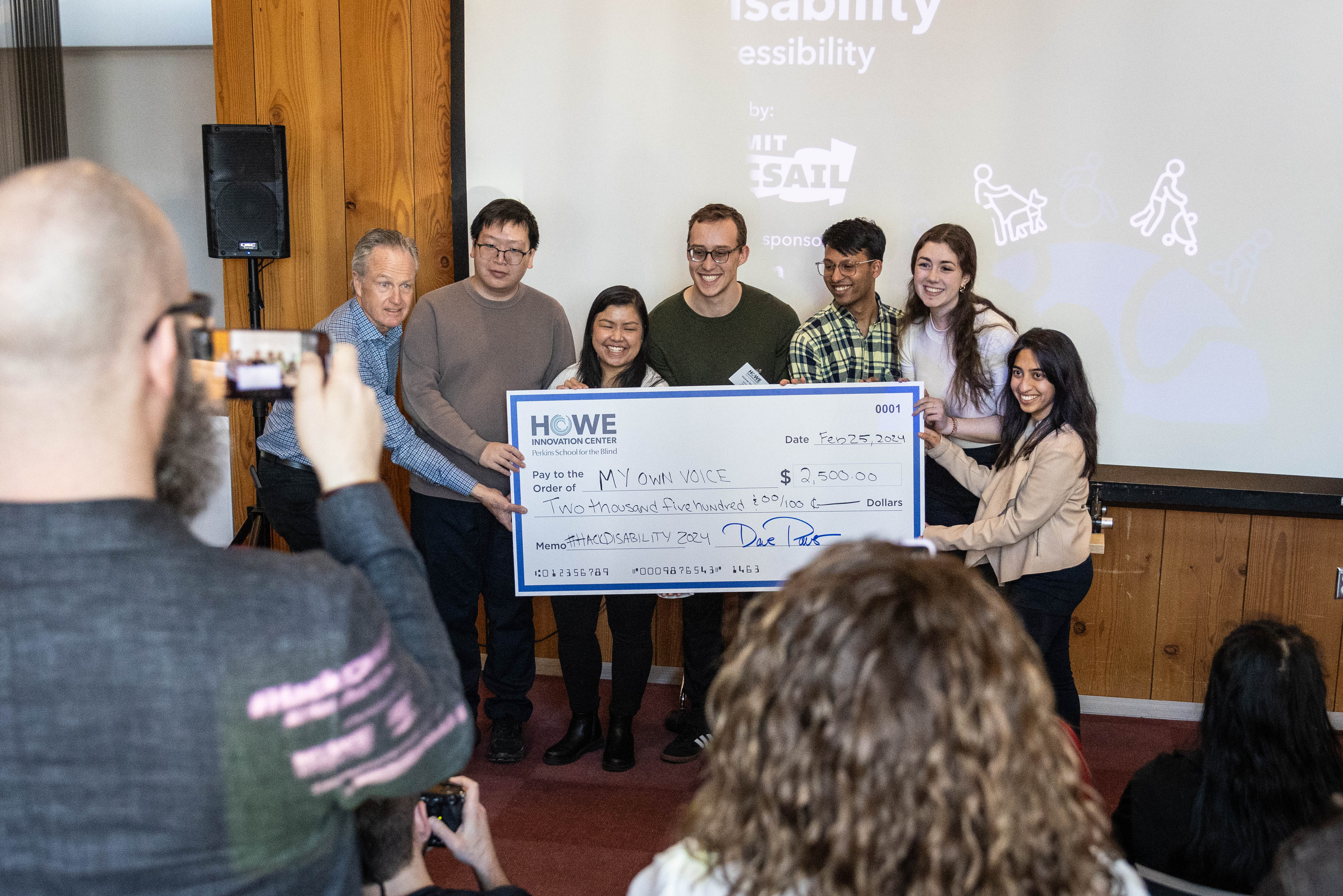Written by Audrey Woods
It’s difficult for those who do not live with a disability to imagine the daily challenges faced by those that do. Because physical and digital environments are not often fully accessible, tasks like locating one’s gate at the airport or understanding others’ emotions conveyed by body language are that much more difficult for those who are, for example, visually impaired or have neurocognitive disabilities. Historically, people with disabilities have had to contend with technology that does not meet their needs because such technology was built for but not with them. However, as CSAIL Director Professor Daniela Rus said in her introduction to #HackDisability: AI for Accessibility, “Rapidly improving technology offers a world of opportunities [and] ways to solve problems that previously seemed unsolvable.”
In the first formal collaboration between the Howe Innovation Center at Perkins School for the Blind and CSAIL, #HackDisability: AI for Accessibility was a three-day event designed to accelerate the development of accessible innovation and apply the incredible potential of AI toward solving known challenges facing people with disabilities. From February 23rd to 25th, nine teams gathered in the Stata Center to identify where AI might have a positive impact for people with disabilities, design AI solutions to meet that need, and then—alongside people with disabilities—build AI prototype programs addressing areas ripe for innovation, such as diagnostics, accommodation, care management, communication, indoor/outdoor wayfinding, and more.
The event was kicked off with introductions from CSAIL Director Professor Daniela Rus and Managing Director of Global Strategic Alliances Lori Glover, who summarized the event’s mission saying, “We are challenging students to use AI to envision new assistive technologies that will improve the lives of people in many ways.” There were also speeches from Perkins School for the Blind CEO Dave Power, OSTP Assistant Director for Accessibility, White House Office of Science and Technology Policy Judy Brewer, and Josh Miele, Principal Accessibility Researcher at Amazon and MacArthur Foundation Fellow, Class of 2021. CSAIL Research Scientist Dr. Sarah Schwettmann was the driving force from the CSAIL side, and CSAIL Associate Professor Stefanie Mueller served as the faculty lead and a judge. The event was made possible by lead sponsor Amazon, and further supported by the MIT Sandbox Innovation Fund Program and Wegmans.
With an atmosphere of palpable excitement for the potential of such technology, #HackDisability brought together diverse teams of software and hardware engineers, project managers, MBAs, designers, people with the lived experience of having a disability, and students from MIT, Harvard, Tufts, Olin, and more. Three teams out of the nine won cash prize awards of $2500 and the honor of having their projects featured in the Museum of Science this summer. MIT students on the winning teams were also granted acceptance into the MIT Sandbox Spring 2024 cohort with $1000 grant funding to continue their project. The winning teams created AI applications that: gave users options for personalizing tone, presentation, and personality when using voice interpretation (My Own Voice); mapped out and marked indoor spaces with landmarks, auditory cues, and navigation beacons to make unfamiliar places safer and easier to navigate (Smart Beacons); and assessed body language, facial expressions, and reactions during online gatherings to share auditory cues for blind or visually impaired users in an effort to keep them engaged in virtual interactions (Hear the Room).
There are many opportunities for the kind of solutions explored at this event. Sixteen percent of the global population lives with a disability. People with disabilities are the world’s largest minority, the world’s most diverse minority, and the only minority group anyone can join at any moment in their lives. With the current explosion of AI technological advancements, there are endless situations in which AI can be applied to help individuals who live with disabilities live better, access the world, and enjoy luxuries historically denied to them such as enjoying beautiful scenery or interacting with wildlife. Expanding on the technology currently being trialed at CSAIL, Professor Rus imagines that the combination of AI and constantly improving camera equipment can “create an experience closer to sight than anything we’ve previously imagined.”
To learn more about future events, subscribe to our mailing list or contact Lori Glover at lglover@mit.edu to get involved.



